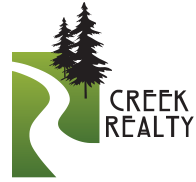As the frenzied pace of the 2018 real estate market began to catch up with fatigued buyers and happy sellers sorted through multiple offers, there was a shift in perceptions of what the coming year would bring. Today we take a dive into some of the factors effecting the residential real estate market in the “Twin Cities Metro” (Minneapolis/SaintPaul, 7 county area) and Minnesota as well as how we compare to other parts of the country. We’ll also talk about how buyers (especially first time buyers) can make the most of this in the coming months.
How We Got Here
The first issue buyers have felt when looking for a house in the Twin Cities is the shortage of homes available. Since April of 2015, the inventory in our area has been on a steady decrease in available homes. In that month, there were 16,000+ homes for sale. In the same month during 2018, there were less than 10,000 homes for sale (Data from NorthstarMLS).
The second factor has been rising interest rates after historic lows in preceding years. The average 30 year, fixed rate mortgage interest rate was 4.03% in January of 2018. While we settled out the year at 4.5%, the peak was around 4.8% In real terms, a $250,000 loan in 2018 could be costing you as little as $1,194 monthly or as much as $1312; that’s a difference of $118 dollars each month. This impacts affordability, and is comparable to reducing the loan amount by $20,000. The result is buyers looking for a $300,000 home that are at the top of their budget could have to adjust their ideal top end to $280,000.
What’s the National Outlook?
Currently it appears that the Federal Reserve is poised for two rate hikes in 2019, and many expect that the interest rate will push mortgages into the 5.1% range (Source: Freddie Mac). That will have an impact on affordability since in the most general terms every tenth of a point adds about $15 to a monthly payment in the previous example. The knock-on effect is likely to be a slowing in the growth of housing prices. Freddie Mac predicts a 4.3% growth in home prices nationally as compared to 5.1% last year.
Closer to Home
The average home sale price in Minnesota was up 5.6% during 2018, which is slightly higher than the national average, but lower than many metro areas nationally. The upside is that the Twin Cities still has a good deal of affordable homes. According to research by Zillow, 75% the available housing inventory at the end of 2018 can be considered affordable at current interest rates. If interest rates were to push to 5.5% that number would be expected to drop to 70% (Zillow -Rising Mortgage Rates…). Minneapolis is in the top 15 for metro area affordability in the nation, and few of the other metros can top what the Twin Cities has. Is there real concern about buyers being priced out of the market? Definitely, but there are still benefits to buying in the near term if your budget currently fits it. Read on to see how.
Should I Rent or Buy?
Setting aside personal preferences on the benefits and costs of having to care for a property yourself, there is a financial benefit to owning vs renting for many people. If you’re on the fence about whether to buy or not, consider a Rent vs Buy Calculator like this one at Nerd Wallet. Results of a calculator such as this will vary depending on individual circumstances, but the typical Eagan home costs around $300,000, and many rentals in the area are around $1500 monthly (2 Bedroom/2 Bath, 1100 SF). In this comparison ( and with a down payment of 3.5%), it is cheaper by roughly $100 monthly to BUY vs rent over the course of five years. Rental rates will certainly go up in that time, while a housing payment will only fluctuate by a small portion in most years (due to property taxes and insurance costs).
Getting A Leg Up.
At Creek Realty, we have strategies to get buyers into the house they dream of, and it all depends on what your goals are. We’re always happy to discuss these with prospective buyers, and you won’t find better buyer representation around! Beyond that though, new buyers have number of options available to make your savings stretch further when buying a house such as:
- Down Payment Assistance – Minnesota Housing is a great start for first-time buyers with loans and grants available to many buyers (up to $15,000 in many cases).
- Local Options – In Dakota County, as well as other areas, there are additional options for closing cost and down payment assistance thru the form of grants and loans. Depending on where you’re looking, we can point you to the right resource!
- Seller Contribution to Closing Costs – If your savings are in a good place to buy, but you’re close, its possible to include a portion or all of your closing costs as part of an offer to buy a house. We’ll explain the details to you and make it easy to understand.
Whatever your situation, give us a call. We’re here to help you make the next move!
